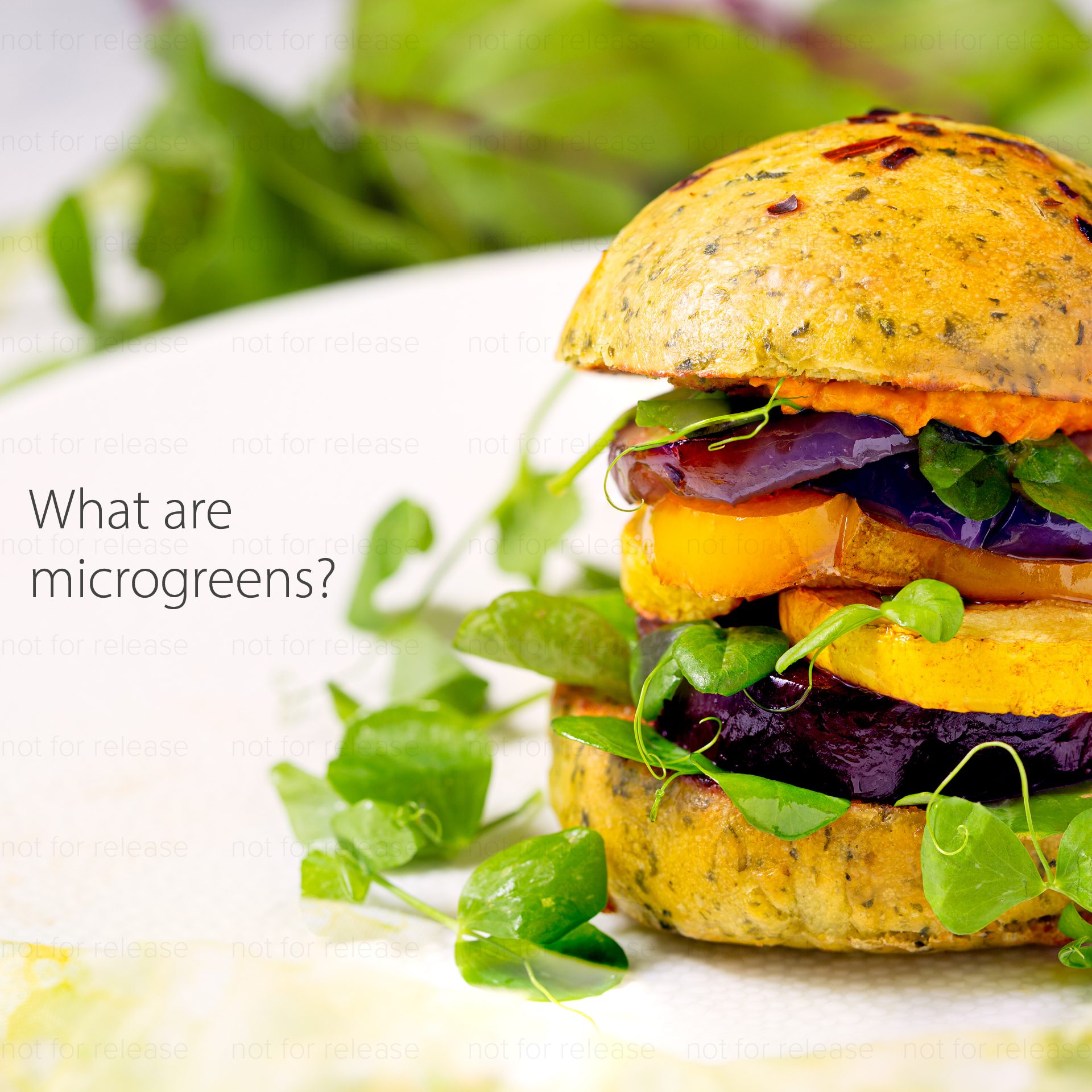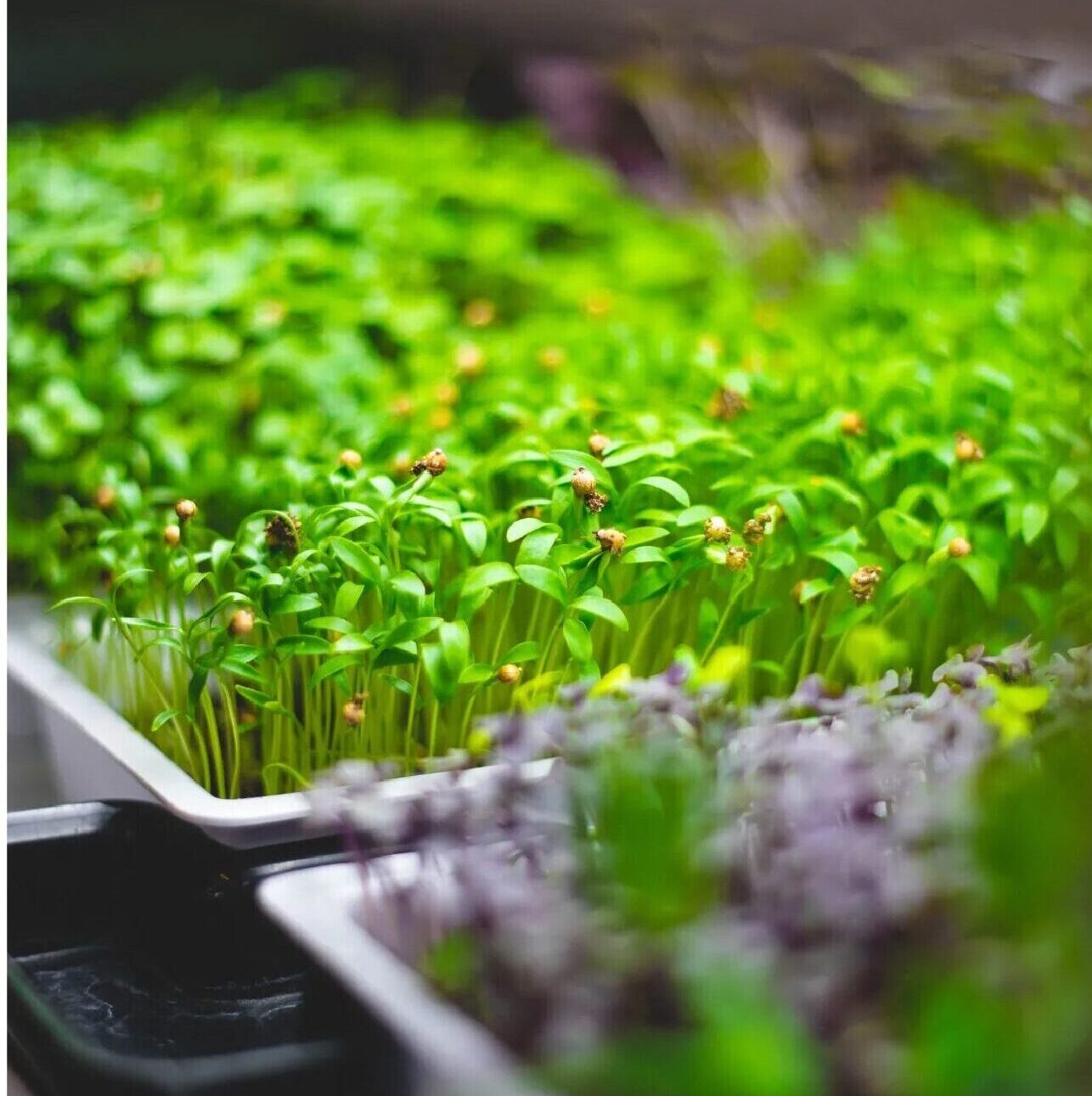

What are microgreens?
Microgreens are the darling children of the modern day menu: they’re beautiful to look at, incredibly nutrient-dense and, with a Homefarm system in place, extremely easy to grow on autopilot.
Before you explore our other article on how to grow your own microgreens, this article is a great starting point to really understand what microgreens are and how they benefit you.
Microgreens: a definition
Microgreens are the tiny-leaved colourful crops that are often used to decorate plates in restaurants. A ‘microgreen’ forms the first stage of a crop’s development as a seedling and a quick look at our crop catalogue will show you just how much variety there really is.
They can bring intense flavour to a meal, and they contain more nutrients per kg than most of their fully grown versions produced through commercial farming and supply chains.

Health benefits of microgreens
The upside of growing microgreens and microherbs at home is that they grow really quickly and don’t take up much space — you can even grow them indoors. To be successful in growing microgreens indoors from the comfort and convenience of your home there are a number of things to consider along your home-growing microgreen journey.
These include using a ‘grow light’, maintaining a moderate temperature range and using a good quality ‘grow medium’. Below we go into more detail on exactly what to consider if you are interested in growing these miraculous little crops at home.
What does it mean when we say microgreens are ‘nutrient-dense’?
Our medical practitioners often advise that we eat a balanced diet, and seek out the least processed sources of nutrients that our bodies need for optimum health from day-to-day, especially when we experience bouts of illness and we need to supplement our usual diets.
Microgreens are highly recommended as part of a healthy eating plan because for every gram of microgreens, there is a higher amount of beneficial compounds than there usually is in a matured food crop. Let’s take broccoli, for example. How hard do most parents have to try, to get children to eat vegetables like this? Broccoli microgreens, however, are far less intimidating to children and pack a stronger punch of nutritional value with every bite.
Beneficial compounds found in microgreens
In a recent study of ours on the nutritional value of microgreens, our team found that microgreens contained a range of vitamins, minerals and all-important fibre (for improved digestive function).
These compounds help to prevent certain illnesses or reduce their severity, should onset occur. They also help us manage our weight more effectively, and can have a positive effect on mental health over time (many of the same compounds are extracted for use in commercial medicine).
Microgreens also contain antioxidants which are known to clear free radicals from the body, which helps with both the prevention and treatment of several cancers.
Environmental benefits of using microgreens
Especially with a Homefarm system in place, microgreens grow quickly and without straining the environment. Growing them in your system at home or on-site at your restaurant, game lodge dining facility or corporate cafeteria reduces your company and supply chain’s carbon footprint; you don’t have to transport anything by car once the planting step is completed.
If you grow your own microgreens at home or on-site for your business, you also won’t need to rely on cold storage because you can harvest and immediately plate or use the ingredients for a recipe. It takes nothing more than a few minutes to move microgreens from farm to fork, when you use a Homefarm system.
Another critical environmental advantage is the reduced dependency on energy and water, per kilo of fresh produce harvested, when compared to traditional commercial farming methods.
Now that you know more about microgreens and some of their key benefits, it’s time to share this article and help spread the words about these incredible food crops and how to grow them.
Share this article.
References:
Petre, A. 2023. Microgreens: all you ever wanted to know. Healthline. Article online. Last updated 7 July 2023. Available at: https://www.healthline.com/nutrition/microgreens#nutrition [Last accessed 17 August 2023].
Ware, M. 2023. Health benefits of microgreens. Medical news today. Article online. Medically reviewed by Warwick, KW. Updated 28 July 2023. Available at: https://www.medicalnewstoday.com/articles/316075 [Last accessed 17 August 2023].
WebMD Editorial Contributors, 2023. What to know about microgreens. WebMD. Article online. Reviewed by Mikstas, C. Last updated 10 July 2023. Available at: https://www.webmd.com/diet/what-to-know-about-microgreens [Last accessed 17 August 2023].
































